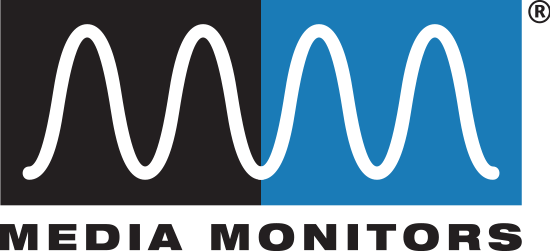 The 2018 outlook for radio advertising spend is a mixed bag, according to a recent survey by Borrell Associates for the Radio Advertising Bureau. Network radio is expected to grow 1.1 percent, but local and national radio are forecasted to see decreases of 3 and 17 percent respectively. The silver lining here is digital, which is expected to see a 14 percent increase from 2017. In fact, total local digital advertising is forecast to increase from $68.4 billion in 2018 to $73.4 billion in 2020.
The 2018 outlook for radio advertising spend is a mixed bag, according to a recent survey by Borrell Associates for the Radio Advertising Bureau. Network radio is expected to grow 1.1 percent, but local and national radio are forecasted to see decreases of 3 and 17 percent respectively. The silver lining here is digital, which is expected to see a 14 percent increase from 2017. In fact, total local digital advertising is forecast to increase from $68.4 billion in 2018 to $73.4 billion in 2020.
This mixed outlook makes it important for radio advertising executives and account representatives to know how to make a strong case for radio as businesses plan their marketing and advertising strategies. Here are five benefits of radio advertising that can be used to make sure your station makes the cut when marketing dollars are being allocated.
- Positive ROI: A recent study by radio network Westwood One and Nielsen Catalina Solutions looked at the effectiveness of radio advertising for one of its consumer packaged goods brands. The result? Every $1 spent on radio advertising delivered $12 in purchase activity. Concrete evidence that radio ads work.
- Reach consumers close to the point of purchase: The majority of radio listening happens outside the home, when people are at work or commuting. Listening peaks at 75 percent outside the home between 3 p.m. and 7 p.m., according to Nielsen. This is when people are close to the point of purchase, running errands on their way home. Simply put, radio is the ideal way to reach consumers when they are thinking about buying.
- Targeted advertising: Every radio program has its unique audience, which can be matched with an advertiser’s target audience. This allows stations to sell specific types of ads with a better ROI. Younger listeners will be receptive to innovative technologies and the latest gadgets, for example, while a dedicated baseball show will provide a targeted audience for a sporting goods store. Further, each station offers a built-in local audience that is ideal for specific industries and Main street businesses.
- Cost-effective: Radio is less expensive than advertising on most other media platforms. This allows advertisers to increase advertising frequency and reach at a lower overall cost.
- More engaging: Radio is all about listening. It requires active participation by the audience. This mental activity and thought processing keeps radio listeners tuned in, even when the music stops and ads come on. Whether they realize it or not, radio listeners are more receptive to ads when compared to television and print where they can be skimmed over or skipped all together.
As you make the case for radio, be sure to emphasize these benefits to show just how effective and far-reaching radio advertising can be. For more information on the state of the industry, including tips on how to pitch and win new radio advertisers, download our e-book, “The Year in Radio Advertising: 2018.”
